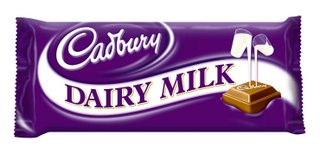
A colour can function as an important part of a company's brand identity and in some cases can even be seen as intellectual property. A colour adds to brand value in a variety of ways, including aiding brand recognition, differentiation and evoking consumer emotion (e.g. the name and colour "Orange" for the British mobile company and the colour and word "brown" for the global courier company UPS). Colour can also become a rallying point for a company seeking to create a seamless brand experience and be used to stimulate consumer behaviour as in Apple's adoption of white for the original Ipod (see our blog on 16/8/05 Silver is so turn of the century.).
So can a company or organisation own a colour? It seems so but not always.
In 1987 Owens Corning made legal history as the first company to trademark a color, in this case, pink, and as far as fiberglass insulation goes it seemed to set a benchmark for the corporate ownership of colour. The difference was that Owen Corning was granted the trademark because limiting others from using pink as a fibreglass colour wouldn’t create a barrier to entry to others, but it seems that some companies aren’t able to ostensibly see this point of view.
Which brings us to Cadbury; "All brands and logos/images accompanied by ® or TM, and the colour purple are Cadbury Group trade marks in Australia. © Cadbury Schweppes Pty Ltd 2004." However, this week Australia's Federal Court has told Cadbury’s, again, that it does not "own" the colour purple in Australia, as its latest attempt to secure use of purple by suing rival Darrel Lea in a protracted trademark dispute failed.
This is the second time Cadbury has attempted to trademark the colour. Cadbury’s original trademark application was made in November 1998 and was described as follows:
“The trade mark consists of the colour PURPLE the said trade mark being adopted as the substantial colour of packaging used in relation to the nominated goods.
The colour is the shades of purple corresponding to the following references in the 1997-1998 PANTONE Colour Formula Guide: 2597c, 2607c, 2617c, 2627c, 266c, 267c, 268c, 269c, 2685c, 2695c, 273c, 274c, Violet C, 2735c, 2745c and 2755c”
At the time the application was only for chocolate and chocolate confectionery.
In 2002 the Australian Trademarks Registrar rejected the company’s attempt on the basis that the evidence presented in the hearings “simply does not show that the purple packaging was functioning as a trade mark at the relevant date, nor that it distinguished Cadbury's chocolates from those of other traders,” said Senior Examiner Deirdre O'Brien. She added that she was not satisfied that, at the date of filing, “if consumers had seen a chocolate block in a purple wrapper, they would have known that colour as a Cadbury trade mark.” Seems nothing much has changed and as far DIFFUSION is aware, the trademark is still pending and hence the decision by the Federal Court.
But Cadbury already claim the dark shade of purple as a global trademark after successful registration in both the UK and New Zealand and launched its action in 2003 to sue Darrell Lea for "passing off" (hard to see how it could do this when it has no trademark in Australia).
Cadbury had objected to Darrell Lea's use of various shades of purple in the rival store’s signage, uniforms and product packaging and claimed that in its original trademark application it applied to have included the colour for use in 17 categories including soaps and perfumes, jewellery, kitchen utensils, clothing and leathergoods (not what you'd expect a chocolate company to claim!). DIFFUSION guesses they were thinking of some very wide brand extensions here.
But Federal Court judge Peter Heerey found that Cadbury, as in the 2002 trademark ruling, had no exclusive claim to the colour and ruled the case against Darrell Lea or any one else Cadbury had threatened, could not proceed. He said he was "not convinced" Darrell Lea had attempted to pass off its goods as Cadbury products or that it would attempt to do so in the future.
Which brings us back to ownership of colour. In the case of Cadbury, while it may not be possible for the company to trademark the colour purple in Australia, perhaps they should have been looking for other ways to enforce the use of colour? Marketplace recognition doesn’t take place overnight and it's probably missed the boat on purple.
Now it seems companies have yet another reminder that attempting colour ownership can make you see red.
No comments:
Post a Comment